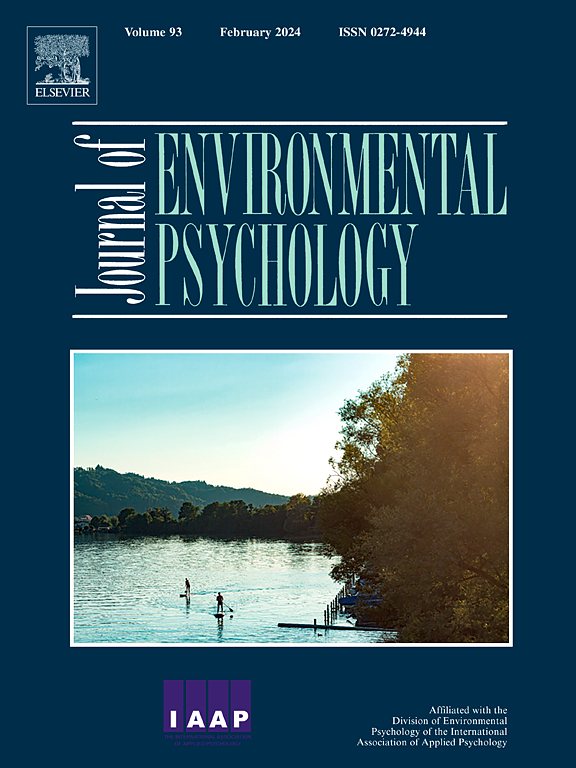Restorative environments enhance mindfulness practice benefits in adolescents: Beyond nature vs. built
IF 7
1区 心理学
Q1 ENVIRONMENTAL STUDIES
引用次数: 0
Abstract
This study aimed to examined how environmental restorativeness influences the effectiveness of mindfulness-based interventions among adolescents. In a six-week Mindfulness-Based Stress Reduction (MBSR) intervention (30–40 min/week) experiment, 47 participants were randomly assigned to one of three environments with varying levels of restorativeness: a natural outdoor setting, an indoor setting with plants, and an indoor setting without plants. Results showed that mindfulness practice conducted in more restorative environments led to significantly greater improvements in mindfulness levels, emotional self-efficacy, and positive affect, along with more substantial reductions in negative emotional states. Among the environmental features assessed, extent emerged as the strongest predictor of mindfulness benefits. These results highlight the importance of environmental restorativeness in supporting mindfulness practice and suggest practical opportunities for enhancing psychological interventions through environmental design.
恢复性环境增强正念练习对青少年的好处:超越自然与建筑
本研究旨在探讨环境恢复性如何影响青少年正念干预的有效性。在为期六周的正念减压(MBSR)干预(30-40分钟/周)实验中,47名参与者被随机分配到三种不同恢复程度的环境之一:自然的室外环境,有植物的室内环境和没有植物的室内环境。结果表明,在更具恢复性的环境中进行正念练习,可以显著提高正念水平、情绪自我效能和积极影响,同时显著减少消极情绪状态。在评估的环境特征中,程度是正念益处的最强预测因子。这些结果强调了环境恢复性在支持正念练习中的重要性,并提出了通过环境设计加强心理干预的实践机会。
本文章由计算机程序翻译,如有差异,请以英文原文为准。
求助全文
约1分钟内获得全文
求助全文
来源期刊

Journal of Environmental Psychology
Multiple-
CiteScore
10.60
自引率
8.70%
发文量
140
审稿时长
62 days
期刊介绍:
The Journal of Environmental Psychology is the premier journal in the field, serving individuals in a wide range of disciplines who have an interest in the scientific study of the transactions and interrelationships between people and their surroundings (including built, social, natural and virtual environments, the use and abuse of nature and natural resources, and sustainability-related behavior). The journal publishes internationally contributed empirical studies and reviews of research on these topics that advance new insights. As an important forum for the field, the journal publishes some of the most influential papers in the discipline that reflect the scientific development of environmental psychology. Contributions on theoretical, methodological, and practical aspects of all human-environment interactions are welcome, along with innovative or interdisciplinary approaches that have a psychological emphasis. Research areas include: •Psychological and behavioral aspects of people and nature •Cognitive mapping, spatial cognition and wayfinding •Ecological consequences of human actions •Theories of place, place attachment, and place identity •Environmental risks and hazards: perception, behavior, and management •Perception and evaluation of buildings and natural landscapes •Effects of physical and natural settings on human cognition and health •Theories of proenvironmental behavior, norms, attitudes, and personality •Psychology of sustainability and climate change •Psychological aspects of resource management and crises •Social use of space: crowding, privacy, territoriality, personal space •Design of, and experiences related to, the physical aspects of workplaces, schools, residences, public buildings and public space
 求助内容:
求助内容: 应助结果提醒方式:
应助结果提醒方式:


